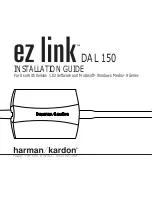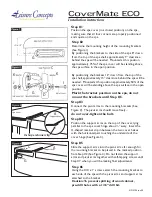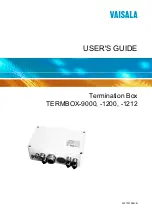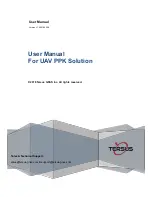
15
Time
-
Enter the current time for your area. You can enter either the local time (i.e.
8:00
), or you can enter military
time (i.e.
20:00
).
Select PM or AM. If military time was entered, the hand control will bypass this step.
Choose between Standard time or Daylight Savings time. Use the Up and Down scroll buttons (10) to toggle
between options.
Select the time zone that you are observing from. Again, use the Up and Down buttons (10) to scroll through the
choices. For time zone information, refer to the Time Zone map in the appendix of this manual.
Date
- Enter the month, day and year of your observing session. The display will read:
mm/dd/yy.
•
If the wrong information has been input into the hand control, the UNDO button will act as a backspace allowing
the user to re-enter information.
•
The next time that your NexStar is aligned, the hand control will automatically display the last location (either a
city or longitude/latitude) that was entered. Press ENTER to accept these parameters if they still apply. Pressing
the UNDO button will allow you to go back and select a new city location or longitude/latitude.
3.
Use the arrow buttons on the hand control to slew (move) the telescope towards any bright celestial object in the
sky. Align the object with the red dot of the finderscope and press ENTER.
4.
If the finderscope has been properly aligned with the telescope tube, the alignment star should now be visible
inside the field of view of the eyepiece. The hand control will ask that you center the bright alignment star in the
center of the eyepiece and press the ALIGN button. This will accept the star as the first alignment position. (There
is no need to adjust the slewing rate of the motors after each alignment step. The NexStar automatically selects the
best slewing rate for aligning objects in both the finderscope and the eyepiece).
5.
For the second alignment object, choose a bright star or planet as far as possible from the first alignment object.
Once again use the arrow button to center the object in the finderscope and press ENTER. Then once centered in
the eyepiece press the ALIGN button.
6.
Repeat the process for the third alignment star. When the telescope has been aligned to the final stars, the display
will read "
Match Confirmed".
Press UNDO to display the names of the three bright objects you aligned
to, or press ENTER to accept these three objects for alignment. You are now ready to find your first object.
Tips for Using Sky Align
Remember the following alignment guidelines to make using Sky Align as simple and accurate as possible.
•
Be sure to level the tripod before you begin alignment. The time/site information along with a level tripod will
help the telescope better predict the available bright stars and planets that are above the horizon.
•
Remember to select alignment stars that are as far apart in the sky as possible. For best results make sure that the
third alignment star does not lie in a straight line between the first two stars. This may result in a failed alignment.
•
Don’t worry about confusing planets for stars when selecting alignment objects. SkyAlign works with the four
brightest planets (Venus, Jupiter, Saturn and Mars) as well as the Moon. In addition to the planets, the hand
control has over 80 bright alignment stars to choose from (down to 2.5 magnitude).
•
Rarely SkyAlign will not be able to determine what three alignment objects were centered. This sometime
happens when a bright planet or the Moon passes near one of the brighter stars. In situations like these it is best to
try to avoid aligning to either object if possible.
•
Be sure to center the objects with the same final movements as the direction of the GoTo Approach. For example,
if the scope normally finishes a GoTo with the front of the scope moving right and up, you should center all three
alignment objects in the eyepiece using the right and up arrow buttons (the up/down arrows reverse at slew rates
of 6 or lower). Approaching the star from this direction when looking through the eyepiece will eliminate much of
the backlash between the gears and assure the most accurate alignment possible.
Helpful
Hints
















































